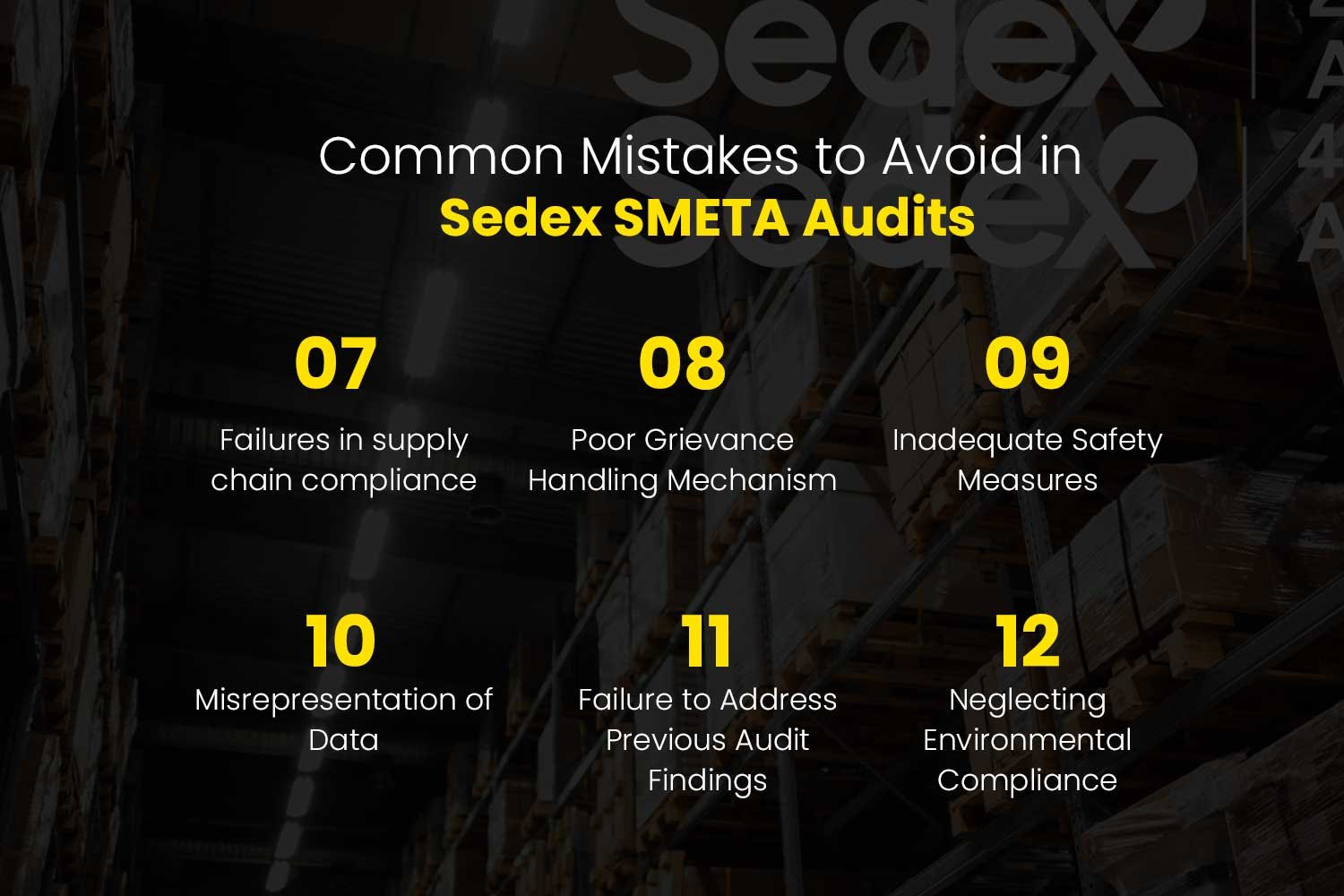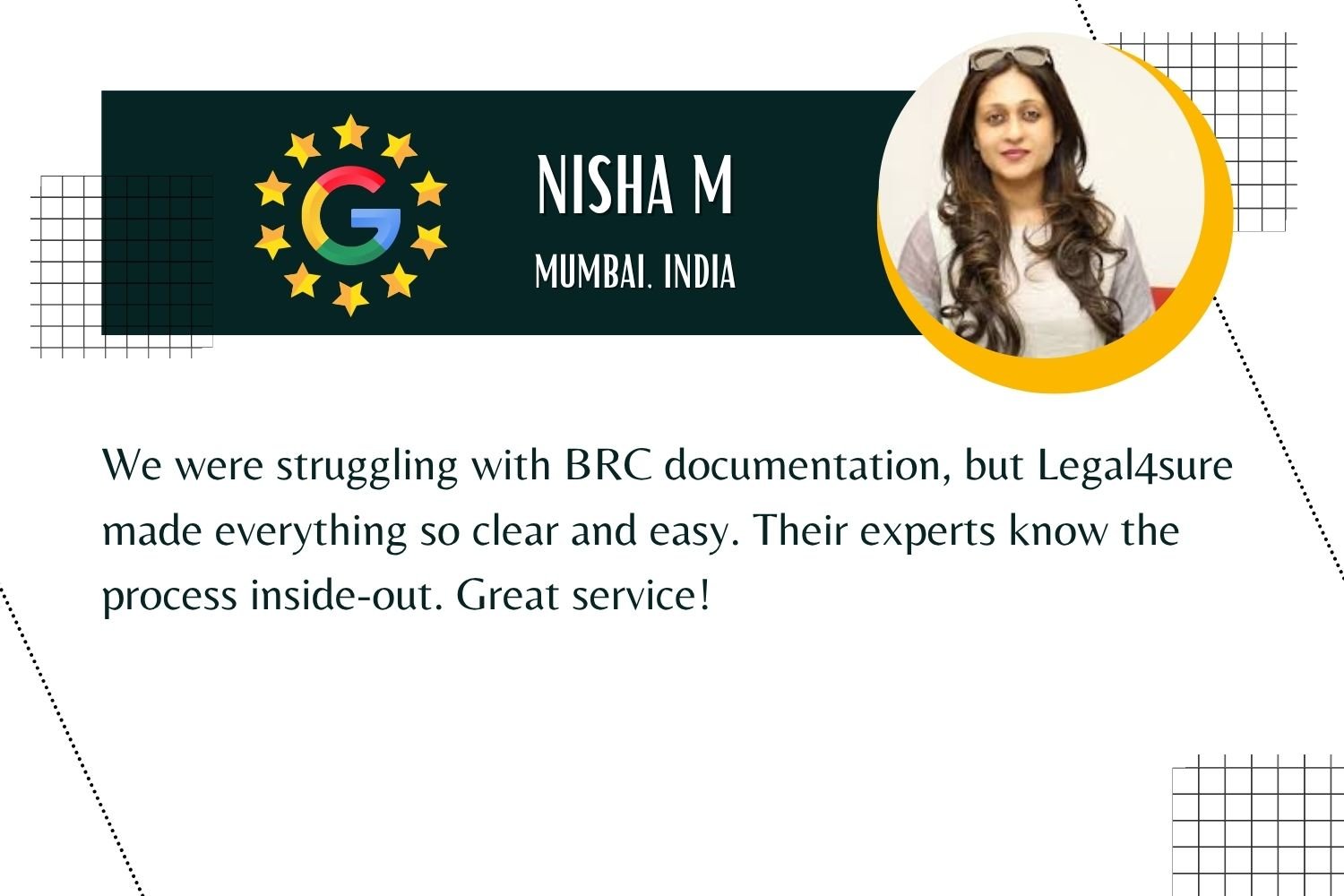Applying for a Sedex audit can be a bit like getting into a puzzle, and while it is not that complex. Well today we are here to help, so just put on your seat belt and lets get in the car for a drive. In this guide, you are going to discover the top mistakes to avoid in Sedex SMETA audits, ways to reduce the possibility of making big blunders and effectively make the audit a 100 % throughout and make your journey delightful. It is a guide that gives you direction as to how you are going to handle the audit.
No matter if it is your first audit or you are considering improving we will provide you with real-life advice on how to do things rightly. Well, let’s start and provide you with the best tips for your next Sedex audit! Below are 20 critical SEDEX Audit mistakes, to ensure a smooth audit experience.
Common Mistakes to Avoid in Sedex SMETA Audits That You Must Know!
1. Inadequate Preparation
Mistake:
This is one of the bad things a company can do to itself through a poor internal review before the audit. Here’s how to avoid falling into the trap of inadequate preparation:
Solution:
- Make a Detailed SMETA Audit Checklist : Work out on a checklist about the SMETA audit requirements. This include all papers, registries, regulations, and all forms that should undergo review process.
- Provide complete training to your team for better performance: Regular trainning and updates can make a big difference during audit process. Thus, Sedex SMETA standards and processes must be continuous.
2. Overlooking Employee Training
Mistake:
Lack of training is the reason for blunders which, if they occur in accounting, are taken as critical errors. Lack of adequate knowledge about the roles and the audit will be a problem for individuals. To address this:
Solution:
- Implement Regular Training Programs: Establish recognition and communicate with the employees in training on Sedex SMETA standards.
- Use Mock Audits: Thus, to support this, you have to conduct normal internal checkups to make sure that the employees are in line for the actual SMETA audit.
3. Poor Documentation and Record-Keeping
Mistake:
Payroll records, contracts, and safety records data are categorized as missing. To avoid documentation errors:
Solution:
- Maintain Accurate and Up-to-date Records: Summarize the assessment evidence for all records and make sure that all recorded information reflects your compliance with the SMETA standards.
- Regularly Review and Update Documents: Verify the documentation and then remind everyone now and then to prepare for the audit check.
4. Ignoring Non-Conformities
Non-conformities should therefore be addressed with much seriousness and the first time they are observed. The truth is that if you ignore issues and problems or delay corrective measures, the audit result is at risk.
Solution:
- Develop a Corrective Action Plan: Every time that these are identified, develop a detailed corrective action plan ready on the defects reported.
- Follow Up on Corrective Actions: Occasionally make sure that you have ensured and agreed that all corrective actions have effectively been handled.
Legal4sure as your SEDEX Consultants in India, can help you to fix all the non-conformities and other mistakes of SEDEX SMETA audit in your business to successfully pass the SEDEX audit. Contact us now!
5. Ignoring Sedex Guidelines
Mistake:
Not aligning internal processes with Sedex SMETA audit requirements.
Solution:
Introduce Sedex to your team and ensure that they’re able to affirmatively apply the guidelines that it outlines in their day to day operations.
6. Neglecting Continuous Improvement
Audits aren’t just one-time checks; they help improve and stay ready for future reviews. Continuous improvement is key to maintaining compliance.
Solution:
- Implement Ongoing Reviews: Compliance cannot be managed through static plans but instead needs to be done through reacted and modified action plans. With monitoring you can learn where changes can be made and for your processes to be applicable to the Sedex SMETA standards.
- Seek and Act on Feedback: Keep feedback from the audits and take it as a tool to effect changes. Be sure to incorporate input and perceptions in the day’s compliance processes.
7. Failures in supply chain compliance
Mistake:
Failure to Audit its supplier and subcontractors.
Solution:
Create an assessment and documentation of supplier compliance on a set schedule.
8. Poor Grievance Handling Mechanism
Mistake:
Not having a system to address and document worker complaints.
Solution:
Establish and follow grievance procedures which should be very open.
9. Inadequate Safety Measures
Mistake:
There is no fire extinguisher, the emergency exits are blocked, or the staff is not trained on evacuation.
Solution:
Conduct a fire drill or other safety practice, and be certain that the equipment is serviceable and within easy reach.
10. Misrepresentation of Data
Mistake:
Handing fake or conflicting details to auditors.
Solution:
There needs to be transparency when deliberating on such records and data accuracy has to be maintained throughout.
11. Failure to Address Previous Audit Findings
Mistake:
Failure to address problems that had been noted down in previous audits.
Solution:
Monitor and record data to show an improvement constant strategy is in operation.
12. Neglecting Environmental Compliance
Mistake:
Improper waste disposal, high energy consumption, or lack of sustainability initiatives.
Solution:
Follow and record activities that are considerably environmentally friendly, aligning with audit needs.
13. Untrained Audit Representatives
Mistake:
Assigning audit responsibility to untrained personnel.
Solution:
Train a dedicated team to handle social audit queries and procedures effectively.
14. Overlooking Ethical Practices
Mistake:
Self-employment unethical acts, like fraud, embezzlement, bribery, or favoritism.
Solution:
Introduce and then apply a strong ethical code of professionalism across your business.
15. Non-Standardized Working Hours
Mistake:
The cases of employees working long hours without proper compensation.
Solution:
Make working hours standardized and check whether overtime rules are not violating the law.
16. Failure to Maintain Accurate Records
Mistake:
Partial records such as records of attendance register, payroll register, etc.
Solution:
Apply a strong system to maintain and update records regularly. This will ensure that your organization’s data is accurate.
Contact us and get your business documents and records maintained, for the smooth SEDEX audit process!
17. Non-compliance with Building Codes
Mistake:
Functioning that is non-compliant with lawful building and safety laws.
Solution:
Regular checks must be considered, sometimes even involving the use of a professional for audits, and address the problems with the structure or safety issues.
18. Insufficient Communication with Auditors
Mistake:
Failure to give brief or precise responses to questions raised by auditors.
Solution:
Get your team ready for social audit engagements and designate spokespersons.
19. Relying Solely on Consultants
Mistake:
Expecting consultants to resolve all compliance issues without internal effort.
Solution:
Collaborate with consultants while building internal capacity for compliance management.
20. Delayed Audit Preparation
Mistake:
Waiting until the last minute to start audit preparations.
Solution:
Begin preparations months in advance to address any gaps effectively.
Why Choose Legal4sure For Successful SEDEX Certification?
Getting sedex certification in india can feel overwhelming, but with Legal4sure, the process becomes simple, structured, and stress-free. Here’s how our expert team can support you to avoid SMETA Audit mistakes:
- Expert Gap Assessment
We begin with a detailed pre-audit evaluation to identify gaps in your current compliance and offer modified solutions to close them. - Customized SMETA Audit Checklist
Legal4sure provides a step-by-step SMETA Audit Checklist , specially designed for your business operations—so nothing is missed. - Employee Training and Mock Audits
Our trainers conduct interactive sessions and mock audits to make your team confident and audit-ready. - Documentation and Policy Support
We help you develop, organize, and maintain all required documents—HR policies, grievance redressal mechanisms, health & safety records, and more. - Corrective Action Planning
In case of any non-conformities, we help you create and implement an effective Corrective Action Plan (CAP) to ensure 100% compliance. - End-to-End SEDEX Audit Support
From application to final approval, Legal4sure handles the entire audit journey, coordinating with auditors and guiding you every step of the way to avoid SEDEX SMETA Audit mistkes.
Case Study Of How Legal4sure Helped To Reduce The Mistakes During SEDEX SMETA Audit
A medium-sized garment manufacturing unit in Noida was preparing for their first SEDEX SMETA 4-pillar audit.
Challenge
The company assumed their basic HR policies and fire safety measures were sufficient. However, a preliminary gap assessment by Legal4sure identified serious issues:
- No documented worker grievance mechanism
- Incomplete health & safety risk assessments
- Lack of evidence for environmental impact monitoring
Solution
- We developed a full grievance redressal process and trained workers
- Created compliant health & safety documentation
- Our experts provided templates and support for environmental reporting
Outcome
The company passed the SMETA audit with only minor observations and gained access to new European buyers who required SEDEX compliance.
Get Connected With Us and Avoid SEDEX SMETA Audit Mistakes For Smooth Certification!
If you are seeking the best SEDEX Audit services for your SEDEX Certification, connect with Legal4sure right now and get the simplest process of working. We will properly guide you with mistakes to avoid in SEDEX SMETA Audits. Our team of skilled Sedex consultants and auditors with years of experience will help you in every way to achieve SEDEX certification.
Frequently Asked Questions
1. What are the common reasons companies fail a SMETA audit?
Because they miss basic compliance requirements like documentation, safety, or worker records.
2. What should you never say during a SEDEX audit?
Never admit “we don’t follow this”, instead explain your process and show proof.
3. How can businesses best prepare for a SEDEX SMETA audit?
By organizing documents, fixing gaps early, and training staff on compliance.
4. What usually triggers non-compliance findings in SMETA audits?
Poor HR practices, missing records, safety gaps, or unclear procedures.
5. What SEDEX pillar mistakes businesses should avoid?
Ignoring worker welfare, safety systems, environment practices, or ethics checks.
6. What is the biggest mistake in understanding SEDEX vs SMETA?
Thinking they’re the same , SEDEX is the platform, SMETA is the audit method.
7. What’s the common internal audit mistake before a SMETA audit?
Not reviewing risks and corrective actions thoroughly before the official audit.
8. What errors do companies most often make during a SMETA audit?
Providing incomplete documents or giving answers that don’t match written policies.













